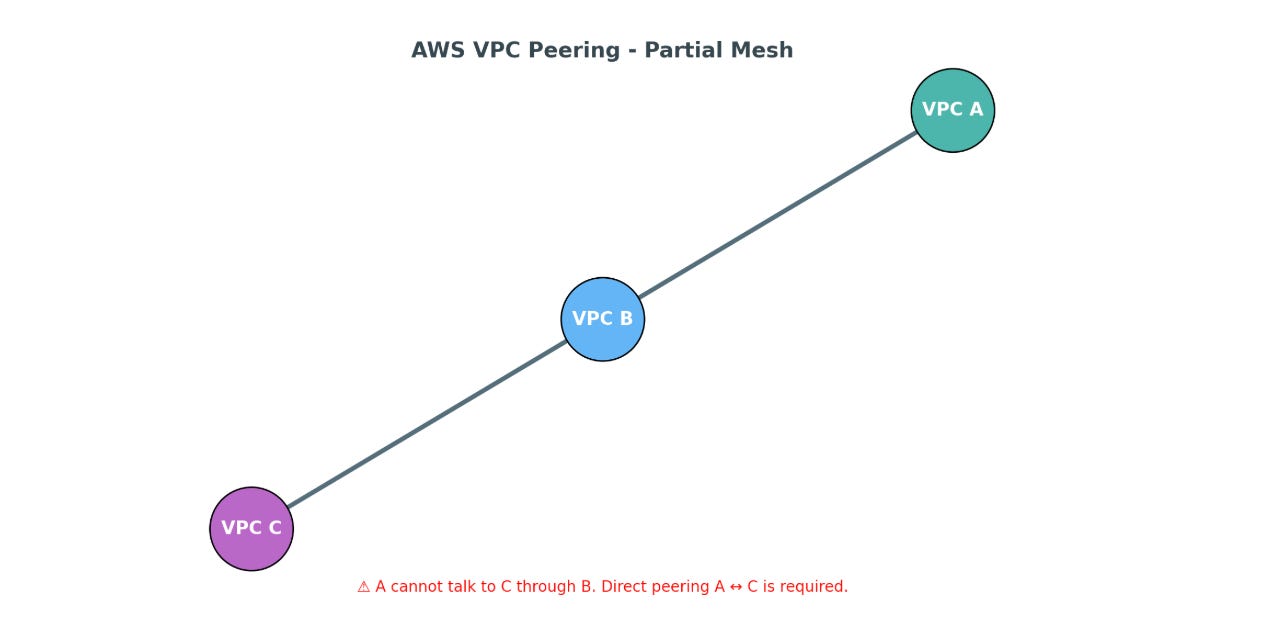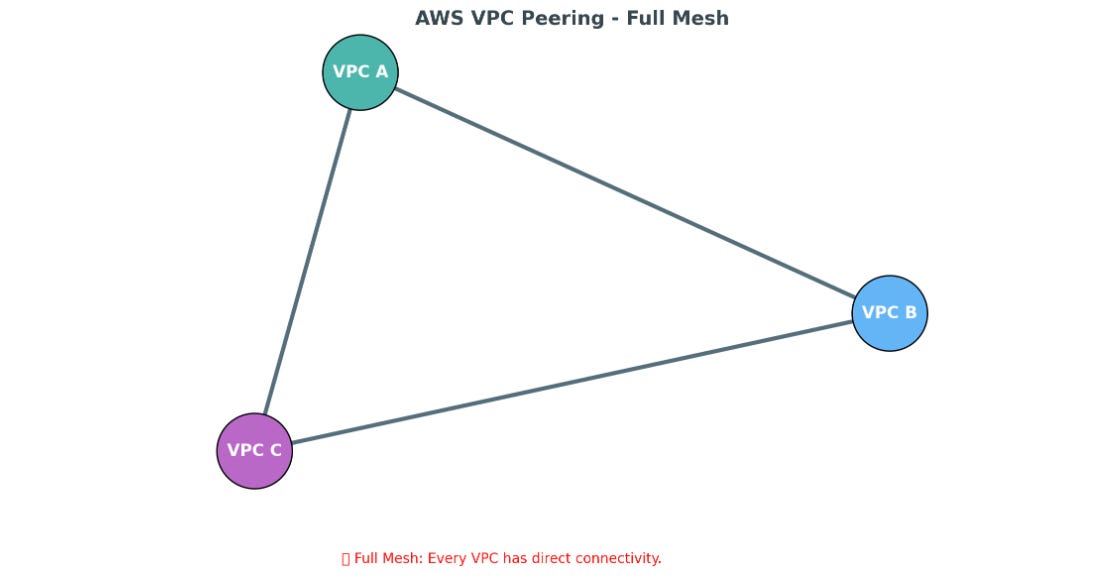🧠 The Hidden Power of VPC Peering
VPC Peering explained: secure, private, and cost-effective
Last week, I was setting up communication between two VPCs.
Instead of overcomplicating with NAT Gateways or VPNs, the clean solution was VPC Peering — a direct, private connection that saves cost and reduces complexity.
What is VPC Peering?
VPC Peering is a networking connection that allows two Amazon VPCs to communicate using private IP addresses.
No need for Internet Gateway, VPN, or Transit Gateway.
Acts as a private bridge between two networks.
When Do You Need VPC Peering?
Connect VPCs across different AWS accounts.
Enable inter-region VPC communication.
Share databases, monitoring tools, or services securely.
Route traffic without exposing it to the internet.
What Happens Internally in VPC Peering?
When you create a VPC Peering connection, a few internal steps ensure successful communication:
1- Peering Request & Acceptance
A peering request is generated by the requester VPC.
The target (accepter) VPC must accept it before the connection becomes active.
2- Route Table Updates
Each VPC must update its route tables with the CIDR of the peer VPC.
Without this, traffic won’t know where to go.
3- Security Groups & NACLs
Even if routes exist, traffic will be blocked unless SGs and NACLs are explicitly allowed.
Example: If VPC A’s instance needs SSH access from VPC B, SG rules must permit it.
4- Optional: Private DNS Resolution
You can enable DNS resolution so that private hostnames in one VPC resolve to private IPs in the peer VPC.
Makes cross-VPC communication seamless using hostnames instead of IPs.
✨ Note: A peering connection only creates the “bridge.” You still need routes + firewall rules
Configurations
1- Full CIDR Peering
Adds entire peer CIDR to route tables.
All subnets across both VPCs can communicate.
Use Case: Centralized logging/monitoring, split applications.
Use security groups to restrict communication if only specific workloads should connect.
2- Subnet-Selective Peering
Only selected subnet prefixes added to routes.
Limits connectivity to specific resources.
👉 Use Case: DB subnet in VPC A ↔ App subnet in VPC B.
Improves security and isolation.
VPC Peering Topologies
Partial Mesh (Scales poorly)
Only certain VPCs are peered.
Example: A ↔ B, B ↔ C, but A cannot talk to C unless direct peering is created.
Full Mesh (Every VPC Connected)
Each VPC has a direct peering connection with every other VPC.
Ensures full connectivity, but becomes harder to manage as VPCs grow.
Partial Mesh – Only A↔B and B↔C are peered. A cannot talk to C unless they are directly peered.
Full Mesh – A↔B, B↔C, and A↔C are all connected. Every VPC can talk directly.
Scaling Tip:
Peering works well for 2–3 VPCs.
Beyond that, AWS Transit Gateway (TGW) is a better option:
Hub-and-spoke model (centralized).
Simplified routing.
Easier to scale.
Key Limitations of VPC Peering (important for interviews & real-world use)
No Transitive Peering – If VPC-A is peered with VPC-B, and VPC-B is peered with VPC-C, A cannot directly talk to C.
Same Region vs Cross-Region – Cross-region peering is supported but has cost implications.
No Overlapping CIDR – Peering won’t work if CIDR blocks overlap.
No Security Group Referencing Across VPCs – You cannot reference security groups of peer VPCs.
Best Practices
Design CIDR blocks carefully before peering to avoid overlaps.
Use tags for peering connections to simplify management in large environments.
Monitor peering traffic with VPC Flow Logs for visibility and troubleshooting.
Regularly review route tables after changes for easy-to-miss updates.
Alternatives to VPC Peering
AWS Transit Gateway → If you have many VPCs or need transitive routing, Transit Gateway is a better solution.
PrivateLink → Use for secure, private access to services without exposing them publicly.
VPN / Direct Connect → For hybrid setups connecting on-prem with VPCs.
Real-World Example
A fintech company uses VPC peering to connect production and logging VPCs securely, but later migrated to Transit Gateway to handle 20+ VPCs across multiple regions. This shows scalability in action.
Pro Tip for Readers
Always start with VPC peering for simple 1:1 connectivity.
As your cloud grows, plan a migration path to Transit Gateway or PrivateLink to avoid redesign later.
📬 Get in touch
What’s been your trickiest VPC Peering challenge?
Setting up cross-account peering?
Handling inter-region communication?
Or debugging tricky route table setups?
Reply and let me know — I’d love to feature your real-world stories in the next issue. If you enjoyed this, drop ❤️ and share! If you want to collaborate or sponsor the newsletter? Email me at pranjalikomal5@gmail.com.
See you next time! Until then → connect smart, scale secure.
— Pranjali, DevOps & Cloud Consultant ☁️
Thanks for reading! If you haven’t subscribed yet, you can subscribe now.




This is a good write. Would also recommend you to put CloudWAN also as an alternative and a better approach in case of multiple VPC's and cross region peering